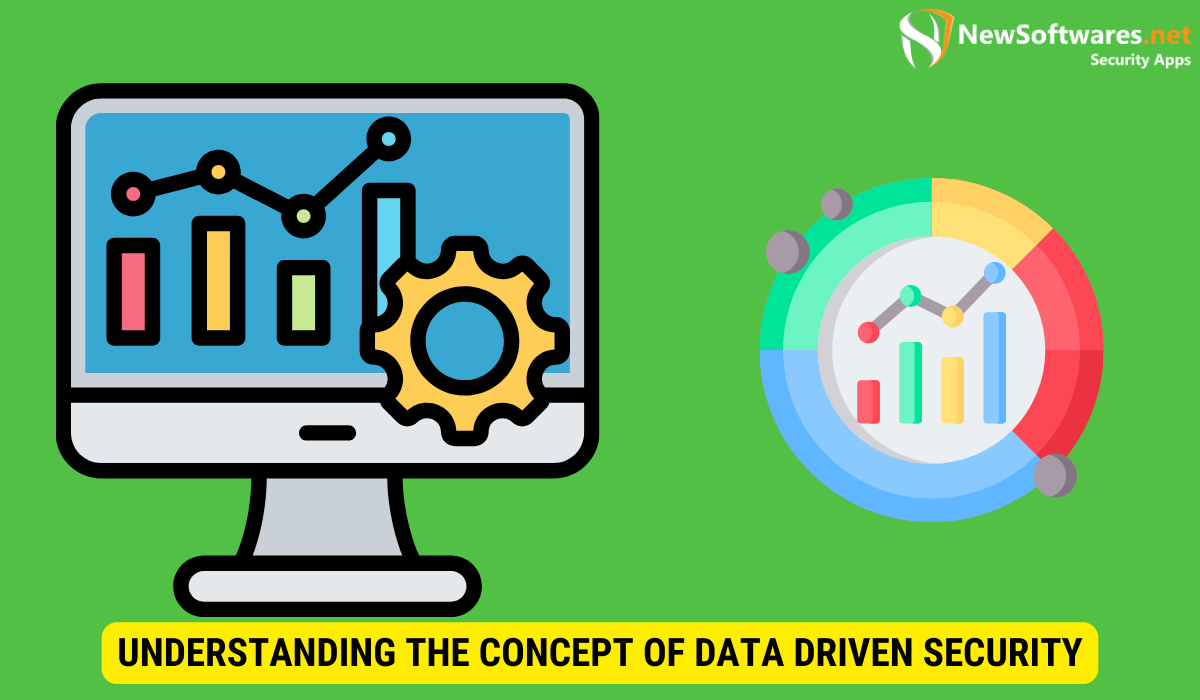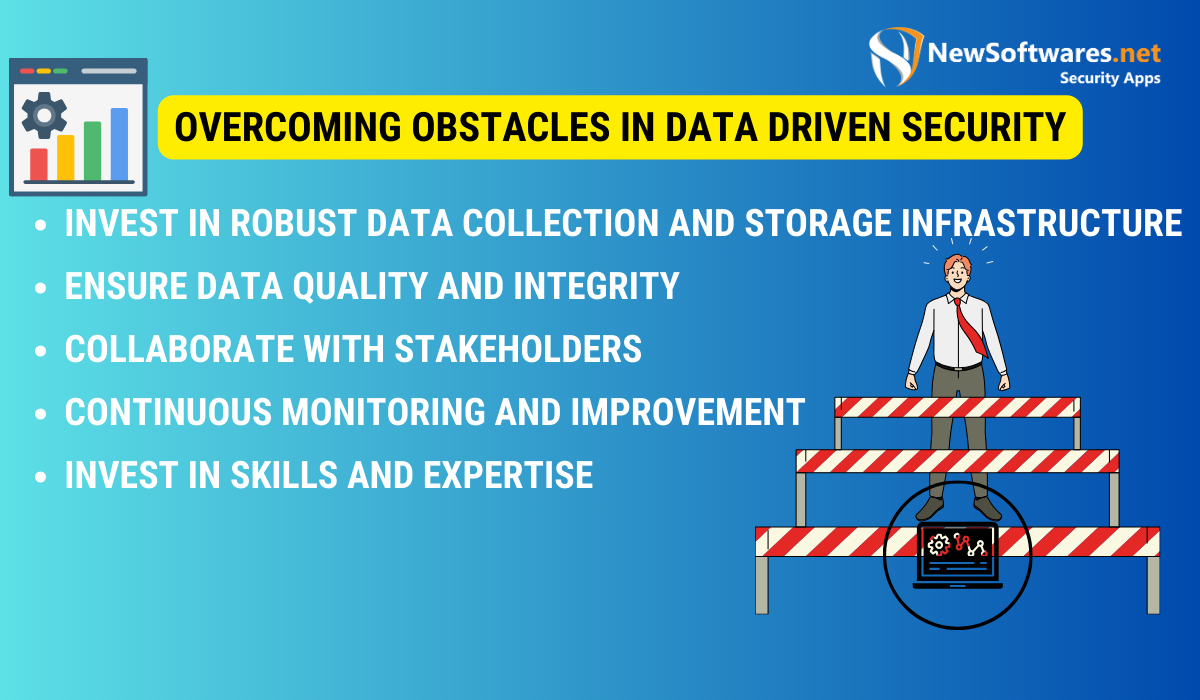Data-driven security is a strategic approach that utilizes data analysis to enhance and optimize cybersecurity measures by collecting, analyzing, and interpreting data from various sources to prevent and mitigate security threats.
Data driven security is a strategic approach to cybersecurity that utilizes data analysis and insights to enhance and optimize security measures. It involves collecting, analyzing, & interpreting data from various sources within an organization to make informed decisions and take proactive actions to prevent and mitigate security threats.
Understanding the Concept of Data Driven Security

Data-driven security is centered around the idea that data is valuable for understanding, predicting, and preventing security incidents. Organizations can get valuable insights into their security posture, identify vulnerabilities, and detect abnormal activities by collecting & analyzing data from a variety of sources such as logs, network traffic, user behavior, and threat intelligence feeds.
The Basics of Data Driven Security
In data driven security, organizations first need to establish a solid foundation for data collection. This involves implementing appropriate security controls and tools to capture and store relevant data. Next, organizations must ensure data quality, integrity, and confidentiality to maintain the accuracy and trustworthiness of the collected data.
Once the data is collected, it needs to be organized and structured to enable meaningful analysis. This typically involves applying data analytics techniques, for instance statistical analysis, machine learning, and data visualization, to identify patterns, anomalies, and trends that could indicate potential security threats.
The Importance of Data in Security Measures
Data plays a vital role in rising effective security measures. By leveraging data, organizations can make conversant decisions about security investments, prioritize resources, and align security strategies with business goals. Data driven security enables organizations to move away from reactive approaches toward proactive and preventive security measures.
The Mechanism of Data Driven Security
Data-driven security involves a systematic collection, analysis, interpretation, and action process. It requires the integration of various technologies, tools, and processes to enable a cohesive and streamlined approach to security.
How Data Driven Security Works?
At the core of data driven security is the continuous collection and analysis of security-relevant data. This can be done through security information and event management (SIEM) systems, which centralize and correlate data from multiple sources. SIEM platforms enable real-time monitoring and analysis of security events and the generation of alerts and reports.
Organizations can also leverage threat intelligence feeds, which provide up-to-date information about known threats and malicious activities. By integrating threat intelligence with their data analysis processes, organizations can proactively identify & respond to emerging threats.
Key Components of Data Driven Security
Successful implementation of data driven security requires several key components:
- Data Collection: This involves capturing and aggregating data from various sources, including logs, network traffic, user activities, and threat intelligence feeds.
- Data Analysis: This step involves applying various techniques, such as statistical analysis, machine learning, and data visualization, to gain insights from the collected data.
- Threat Intelligence: Integration of external threat intelligence feeds to augment internal data analysis and enhance the detection and prevention of security threats.
- Predictive Analytics: Utilizing advanced analytics techniques to predict future security incidents and proactively take preventive measures.
- Automation: Employing automation technologies to streamline security operations, improve response times, and reduce human error.
Benefits of Data Driven Security
Data driven security offers numerous benefits to organizations striving to protect their digital assets and mitigate security risks.
Enhancing Security Measures with Data
By leveraging data analysis, organizations can better understand their security posture, identify vulnerabilities, and devise effective security measures to defend their systems and data. Data driven security enables organizations to identify patterns, trends, and anomalies that may go unnoticed, allowing for timely response and mitigation.
Predictive Capabilities of Data Driven Security
Data driven security empowers organizations with predictive capabilities by leveraging historical data and analyzing it to anticipate future security incidents. Organizations can proactively implement preventive measures and minimize the impact of security incidents by identifying patterns and trends.
Challenges in Implementing Data Driven Security
While data driven security offers significant advantages, its implementation is not without challenges. Organizations must address several obstacles to effectively leverage the power of data in their security strategies.
Potential Risks and Limitations
Data-driven security relies heavily on the quality and reliability of the collected and analyzed data. Inaccurate or incomplete data can lead to bogus conclusions and ineffective security measures. Data privacy and compliance regulations must be carefully considered to ensure data collection and analysis practices align with legal requirements and ethical standards.
Overcoming Obstacles in Data Driven Security

To overcome the challenges associated with data driven security, organizations can take several steps:
- Invest in Robust Data Collection and Storage Infrastructure: Organizations should ensure that they have the necessary tools & technologies to collect and store data securely and competently.
- Ensure Data Quality and Integrity: Organizations must implement processes and controls to validate the accuracy and trustworthiness of the collected data.
- Collaborate with Stakeholders: Effective implementation of data driven security requires collaboration across different departments and stakeholders within an organization. This collaboration ensures that the right data is collected, analyzed, and acted upon.
- Continuous Monitoring and Improvement: Data driven security is an interactive process that requires nonstop monitoring and improvement. Organizations should regularly assess their data analysis capabilities and adjust their security strategies accordingly.
- Invest in Skills and Expertise: Organizations should invest in training and growth to build the necessary skills and expertise for data driven security.
The Future of Data Driven Security
Data-driven security is constantly evolving, driven by advancements in technology and the ever-changing cybersecurity landscape.
Emerging Trends in Data Driven Security
One emerging trend in data driven security is the merger of artificial intelligence & machine learning (ML) algorithms. These technologies enable organizations to automate the analysis of vast amounts of data and detect complex security threats in real-time. AI and ML can also assist in making intelligent decisions and predictions based on historical data.
The Responsibility of AI and Machine Learning in Data Driven Security
AI and machine learning algorithms have the budding to revolutionize data driven security by enabling organizations to detect and respond to threats at unprecedented speed and scale. These technologies can investigate large volumes of data, identify patterns, and detect anomalies that may point to potential security breaches. By leveraging AI and machine learning, organizations can enhance their incident reaction capabilities and reduce the time and effort required to investigate and mitigate security incidents.
Key Takeaways
- Data driven security utilizes data analysis and insights to enhance security measures and prevent security threats.
- The process of data driven security involves data collection, analysis, interpretation, and action.
- Data driven security offers benefits such as enhanced security measures and predictive capabilities.
- Challenges in implementing data driven security include data quality and privacy concerns.
- The future of data driven security includes trends such as AI and machine learning integration.
FAQs
Q: How can data driven security enhance security measures?
A: Data driven security enables organizations to gain deeper insights into their security posture, identify vulnerabilities, and develop effective security measures based on data analysis. Organizations can proactively detect & respond to security threats by leveraging data, minimizing the potential impact.
Q: What are the challenges in implementing data driven security?
A: Challenges in implementing data driven security include ensuring data quality and integrity, complying with data privacy regulations, and overcoming cultural and organizational barriers to data sharing and collaboration.
Q: How can organizations overcome obstacles in data driven security?
A: Organizations can overcome obstacles in data driven security by investing in robust data collection and storage infrastructure, ensuring data quality and integrity, collaborating with stakeholders, monitoring and improving their data analysis capabilities, and investing in skills and expertise.
Q: What is the role of AI and machine learning in data-driven security?
A: AI and machine learning play a significant role in data driven security by enabling organizations to automate data analysis, detect complex threats in real-time, and make intelligent decisions based on historical data. These technologies enhance incident response capabilities and enable organizations to notice and respond to security threats at unprecedented speed and scale.
Q: What is the future of data driven security?
A: The future of data driven security includes emerging trends such as integrating AI and machine learning algorithms, enabling organizations to detect and respond to threats more effectively. The use of this technology will continue to evolve, helping organizations stay ahead of evolving security threats.
Conclusion
Data driven security empowers organizations to make informed decisions and take proactive actions to protect their digital assets. Organizations can identify vulnerabilities, detect emerging threats, and enhance their security by leveraging data. While there are challenges in implementing data driven security, organizations can overcome these obstacles through investments in technology, collaboration, and continuous improvement. The future of data driven security holds promise, with emerging trends, for example, AI and machine learning driving innovation in the field. By embracing data driven security, organizations can stay ahead of the evolving cybersecurity landscape & ensure the protection of their critical assets.
